
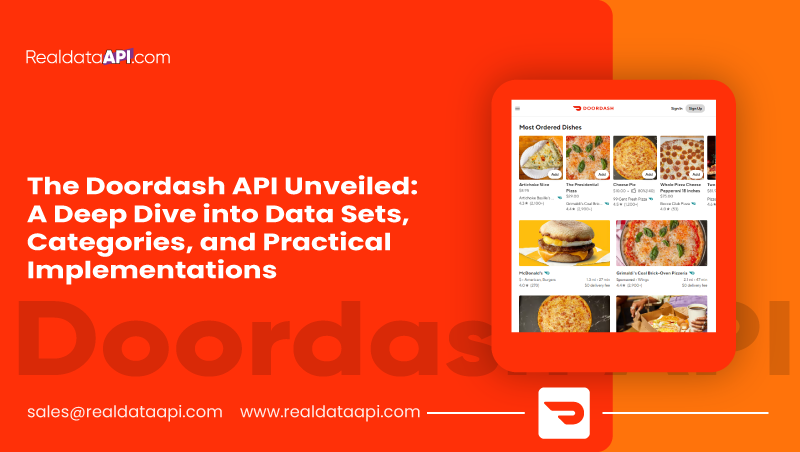
Introduction
Welcome to the intriguing realm of the Doordash API, where many possibilities await exploration. In this comprehensive journey, we deeply dive into the intricate facets of data sets, categories, and the practical implementations that make Doordash a powerful tool in the realm of on-demand delivery services.
At its core, the Doordash API is the gateway to a treasure trove of data, enabling seamless communication between developers and the platform. Our exploration begins by unraveling the diverse and expansive data sets that underpin the Doordash experience. The API opens up a rich tapestry of information that fuels the dynamic ecosystem, from restaurant details and menu information to order tracking and user preferences.
Delving into the various categories of data, we examine how Doordash efficiently organizes and provides access to critical information. Whether understanding user behavior, optimizing delivery routes, or enhancing the overall customer experience, the API's data categorization becomes instrumental in shaping intelligent and responsive applications
As we progress, we will illuminate the practical implementations of the Doordash API, showcasing how developers leverage this powerful tool to create seamless, user-friendly applications. From customizing delivery solutions to integrating real-time updates, the practical applications of the Doordash API are as diverse as the needs of the ever-evolving on-demand delivery landscape. Join us on this insightful journey as we uncover the Doordash API's intricacies, redefining how we experience and interact with on-demand services.
DoorDash: A Quick Overview of its Leading Role in Food Delivery Services
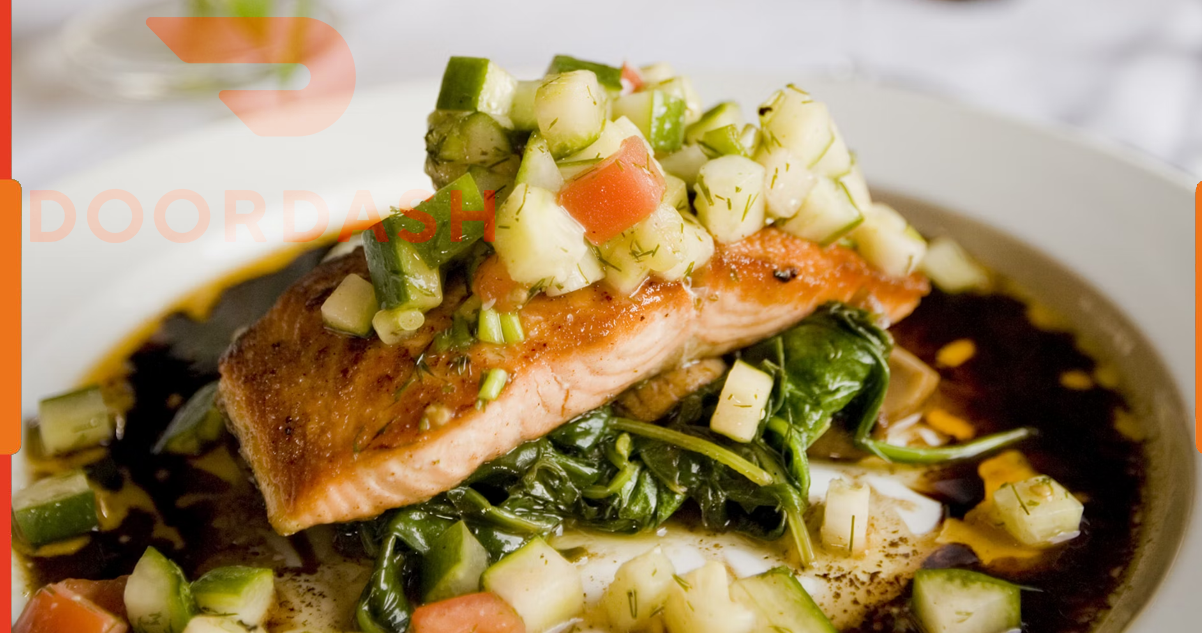
DoorDash is a prominent and influential player in the fiercely competitive realm of food delivery platforms, offering a seamless and convenient solution for users to enjoy their favorite meals from local restaurants without leaving their homes. Founded in 2013 by Tony Xu, Stanley Tang, Andy Fang, and Evan Moore, DoorDash has rapidly become one of the leading on-demand delivery services in the United States and beyond.
At the heart of DoorDash's success lies its user-friendly platform, connecting customers with various restaurants, ranging from local gems to popular chains. The platform's intuitive interface allows users to explore various cuisines, browse menus, and place orders with just a few taps on their smartphones or computer clicks. DoorDash's commitment to providing a hassle-free experience is further evident in its efficient and reliable delivery services, ensuring that meals reach customers' doorsteps promptly.
DoorDash's extensive network of partner restaurants is a key strength, enabling users to choose from various options, including international cuisines, comfort food, and health-conscious alternatives. The platform's strategic partnerships extend beyond restaurants to include grocery stores and convenience stores, broadening its scope to meet a spectrum of consumer needs.
In addition to its user-centric approach, DoorDash strongly emphasizes technology-driven innovation. The company's proprietary logistics technology optimizes delivery routes, ensuring timely and efficient service. Furthermore, DoorDash has embraced the gig economy by engaging a fleet of independent contractors, Dashers, to fulfill delivery orders. This approach provides flexible earning opportunities for Dashers and contributes to the scalability and adaptability of DoorDash's delivery infrastructure.
DoorDash's success is also marked by its continuous expansion into new domestic and international markets. The platform's commitment to enhancing the overall dining experience, its strategic initiatives, and its technological prowess position DoorDash as a significant player in the ever-evolving landscape of food delivery services.
Navigating Doordash: Understanding the Platform's Core Functions
DoorDash operates as a comprehensive on-demand delivery platform, offering a range of functionalities that seamlessly connect users with their favorite local restaurants. The platform's functionality can be outlined across several key aspects:
User-Friendly Interface
DoorDash boasts an intuitive and user-friendly interface, accessible via mobile applications and web browsers. Users can effortlessly navigate the platform, exploring diverse restaurant options, perusing menus, and placing orders with minimal effort.
Extensive Restaurant Network
One of DoorDash's primary functions is connecting users with an extensive network of restaurants. From local eateries to popular chains, the platform offers various cuisines to cater to diverse tastes and preferences.
Order Placement and Customization
Users can easily place orders for their desired meals through the DoorDash platform. The functionality extends to customization options, allowing users to tailor orders based on individual preferences, dietary restrictions, and specific instructions.
Real-Time Tracking
DoorDash enhances the user experience by providing real-time tracking for orders. Customers can monitor the progress of their delivery, receiving updates on the status of their order and the estimated arrival time.
Efficient Logistics Technology
Behind the scenes, DoorDash utilizes advanced logistics technology to optimize delivery routes. This ensures timely and efficient deliveries, contributing to overall customer satisfaction.
Dashers and the Gig Economy
DoorDash leverages a fleet of independent contractors, known as Dashers, to fulfill delivery orders. This gig economy model offers flexible earning opportunities for Dashers and plays a pivotal role in scaling DoorDash's delivery capabilities.
Expansion into New Markets
DoorDash's functionality extends beyond its initial markets as the platform continuously expands its services to new regions domestically and internationally. This expansion contributes to DoorDash's widespread availability and accessibility.
In essence, the functionality of DoorDash revolves around creating a seamless and enjoyable experience for users, from the initial selection of a restaurant to the prompt and convenient delivery of their chosen meals, all facilitated by the platform's user-centric design and advanced technological infrastructure.
Unraveling the Importance of the Doordash API for Developers
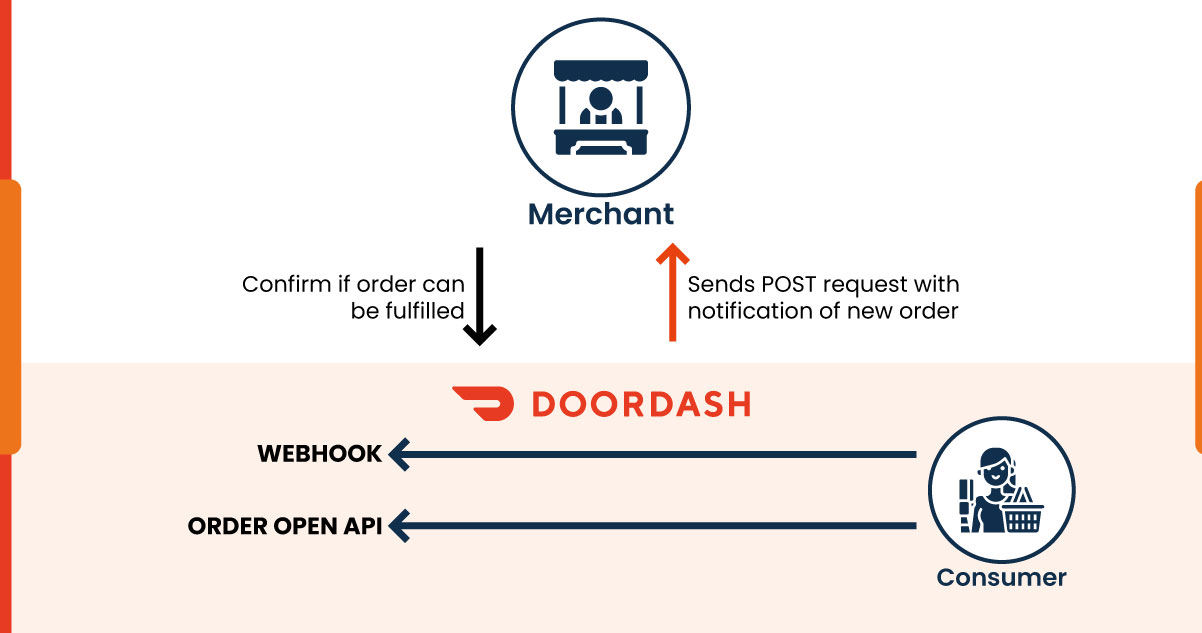
The Doordash API (Application Programming Interface) stands as a pivotal tool in application development, offering developers a gateway to harness the robust capabilities of the popular on-demand delivery platform. Its significance extends beyond mere technical integration, which enhances the functionality and user experience of applications that leverage Doordash's extensive network of restaurants and delivery services.
At its core, the Doordash API serves as a bridge between developers and the wealth of data and services the platform provides. Developers can tap into diverse functionalities, enabling seamless communication and interaction with the Doordash ecosystem. This opens up many possibilities for customization and innovation in applications that require on-demand delivery and restaurant-related features.
One of the primary advantages of integrating with the Doordash API is access to a vast repository of restaurant data. Developers can retrieve detailed information about partner restaurants, including menu items, pricing, and operating hours. This wealth of data allows for the creation of feature-rich applications that empower users with comprehensive insights, aiding them in making informed choices when placing orders.
The API also facilitates real-time order management. Developers can implement functionalities that enable users to place orders, track their status, and receive timely updates. Real-time tracking enhances the overall user experience, providing transparency and convenience, critical elements in the success of on-demand delivery applications.
Customization is another area where the Doordash API shines. Developers can tailor the user interface to match the look and feel of their applications, ensuring a seamless and cohesive user experience. This level of customization extends to integrating Doordash services into existing applications, allowing developers to enhance the value proposition of their products without starting from scratch.
For developers venturing into the gig economy space, the Doordash API offers a streamlined solution. The integration allows for managing delivery drivers, known as Dashers, facilitating efficient coordination and assignment of delivery tasks. This is particularly valuable for applications seeking to optimize delivery logistics and ensure prompt and reliable service.
Security and authentication are paramount in the digital landscape, and the Doordash API addresses these concerns with robust authentication mechanisms. Developers can implement secure access protocols, ensuring only authorized applications interact with the Doordash platform. This commitment to security is crucial in safeguarding user data and maintaining the integrity of the overall system.
The Doordash API also plays a crucial role in expanding the geographical reach of applications. Developers can leverage the platform's capabilities to offer on-demand delivery services in new markets, tapping into Doordash's extensive network of restaurants and delivery infrastructure.
The significance of the Doordash API for developers lies in its ability to empower them with the tools and resources needed to create innovative, user-friendly applications in the realm of on-demand food delivery. By providing access to a wealth of data, real-time functionalities, customization options, and robust security measures, the Doordash API opens doors to a new level of possibilities, fostering the development of dynamic and feature-rich applications that cater to the evolving needs of users in the modern digital landscape.
Doordash API Insights: A Breakdown of the Different Data Sets at Your Fingertips
The Doordash API provides developers with access to diverse data sets, furnishing a rich tapestry of information essential for creating robust and feature-rich applications. These data sets cover various aspects of the on-demand delivery ecosystem, offering comprehensive insights into the platform's functionalities. Here are some key types of data sets offered by the Doordash API:
Restaurant Information
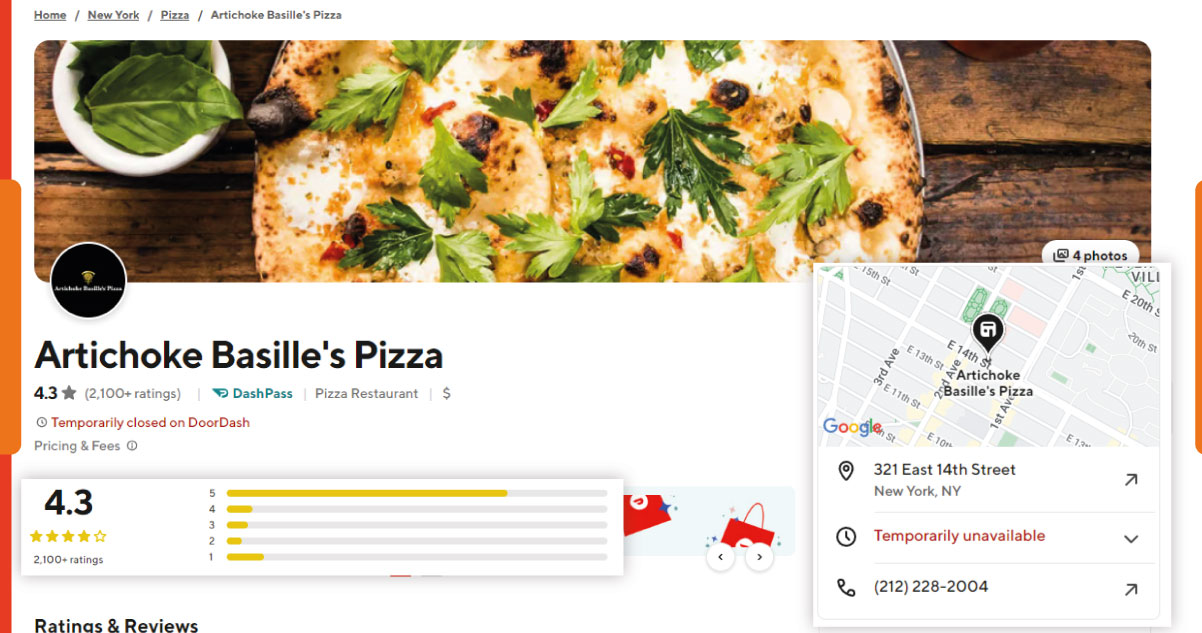
The Doordash API exposes data related to partner restaurants, including details such as restaurant names, addresses, contact information, and cuisine types. This information is crucial for developers aiming to provide users with a comprehensive view of available dining options.
Menu Data
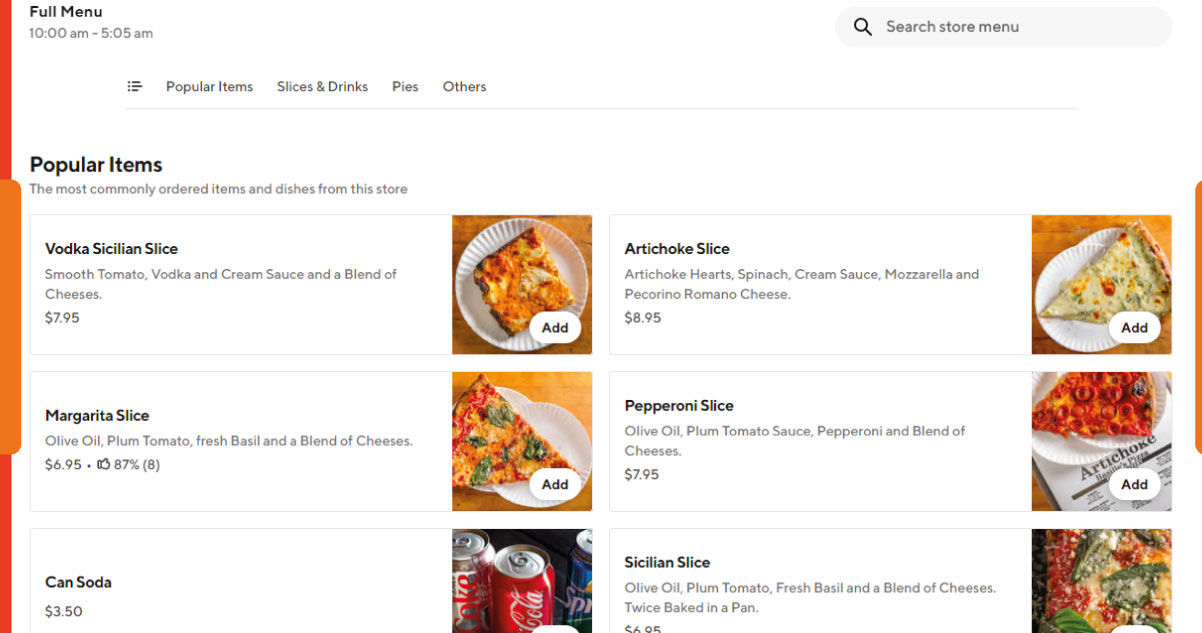
Developers can retrieve detailed menu information through the Doordash API, encompassing individual items, descriptions, prices, and any customization options the restaurant offers. This data lets applications present users with a complete and up-to-date menu selection.
Order and Delivery Status
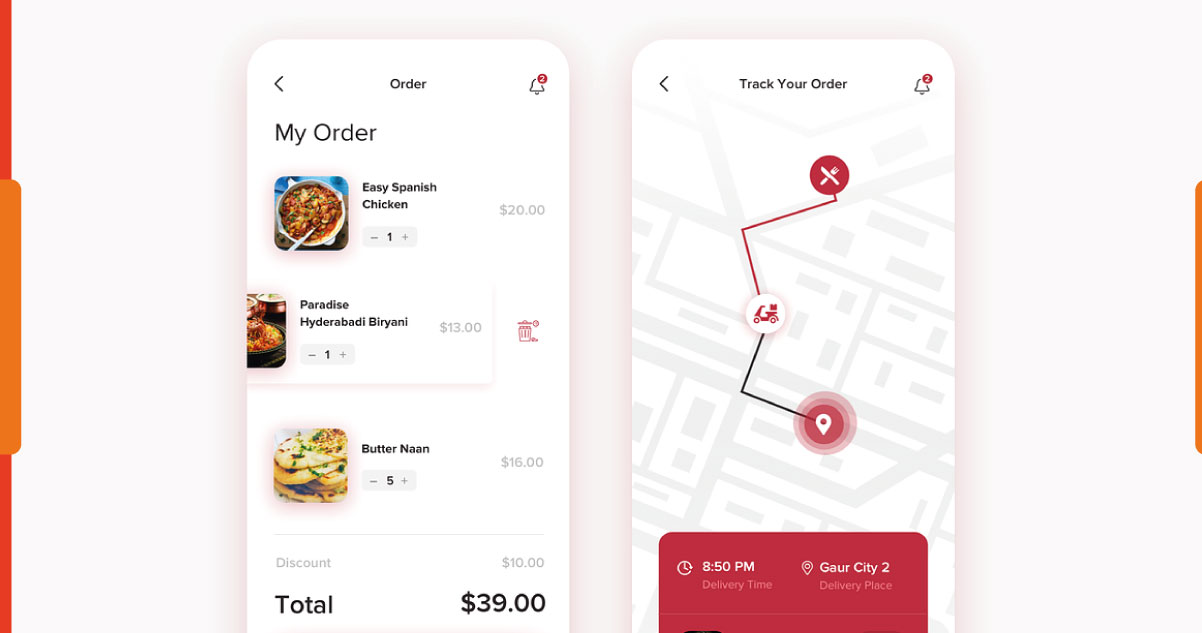
Real-time order tracking is a crucial feature facilitated by the Doordash API. Developers can access data sets that provide information on the status of orders, estimated delivery times, and real-time updates. This functionality enhances the user experience by offering transparency and convenience.
User Account Information
The API allows developers to interact with user account data, enabling features such as account creation, login, and access to order history. This information is essential for personalized user experiences and for maintaining seamless interactions within the application.
Delivery Driver Details
For applications managing delivery logistics, the Doordash API provides data sets related to delivery drivers, also known as Dashers. This includes information on driver availability, assignments, and delivery completion status, contributing to efficient and reliable delivery operations.
Geographical Data
Geographical information, such as location coordinates and delivery zones, is available through the Doordash API. Developers can leverage this data to optimize delivery routes, calculate estimated delivery times, and enhance the overall efficiency of the delivery process.
Promotional and Pricing Data
The API offers access to promotional and pricing data, allowing developers to integrate discounts, promotions, and pricing strategies into their applications. This functionality enhances the competitiveness of applications and contributes to user engagement.
Customer Reviews and Ratings
The Doordash API includes data sets containing customer reviews and ratings for a more holistic view of restaurants. Developers can integrate this information to provide users with insights into the quality of dining experiences offered by different establishments.
In essence, the Doordash API's diverse data sets empower developers to craft applications that facilitate seamless order placement and delivery and deliver a personalized and informative experience for users. By tapping into these varied data sets, developers can create dynamic and user-centric applications that leverage the full spectrum of the on-demand delivery ecosystem.
Doordash API Use Cases
The Doordash API boasts a versatile range of use cases, empowering developers to create innovative applications that enhance the overall on-demand delivery experience. Here are several notable use cases that highlight the flexibility and impact of the Doordash API:
Customized Ordering Platforms
Developers can leverage the Doordash API to create customized ordering platforms tailored to business needs. Whether streamlining the ordering process for corporate clients or implementing unique features for a niche market, the API allows for developing specialized ordering solutions.
Restaurant Aggregator Apps
By integrating the Doordash API, developers can create aggregator applications that consolidate menus and services from multiple restaurants. Users can explore various dining options within a single platform, streamlining the decision-making process and expanding the range of choices available.
White-Label Solutions for Businesses
Businesses in the food industry can utilize the Doordash API to develop white-label solutions for their branded delivery services. This allows restaurants or chains to maintain their identity while tapping into the infrastructure and capabilities provided by the Doordash platform.
Real-Time Delivery Tracking Apps
Applications can be developed to provide real-time delivery tracking for users. Leveraging the Doordash API's order and delivery status data, developers can create features that enable customers to track the progress of their orders from the restaurant to their doorstep.
Dasher Management Systems
The API facilitates the creation of dasher management systems for optimizing the deployment and coordination of delivery drivers. Developers can build applications that efficiently assign and track delivery tasks, ensuring timely and reliable service.
Integration with Point-of-Sale (POS) Systems
Doordash API integration with POS systems enables seamless coordination between restaurant operations and the on-demand delivery platform. This integration streamlines order processing, inventory management, and restaurant financial transactions.
Promotion and Loyalty Programs
Developers can implement promotional features and loyalty programs by leveraging the promotional and pricing data available through the Doordash API. This allows for integrating discounts, rewards, and special offers to incentivize user engagement.
Geofencing and Location-Based Services
The API's geographical data sets enable the development of applications with geofencing capabilities. Developers can implement location-based services, such as notifying users when they are within a certain distance from a restaurant or offering promotions based on their location.
Data Analytics and Insights
Businesses can harness the data provided by the Doordash API for analytics purposes. Developers can create applications that analyze user behavior, popular menu items, and delivery patterns, providing valuable insights for decision-making and business optimization.
Cross-Platform Integrations
The Doordash API allows developers to integrate its functionality into existing platforms, expanding the reach of on-demand delivery services. This includes integrating third-party apps, websites, or even smart devices, offering users diverse access points to the Doordash ecosystem.
These use cases illustrate the adaptability of the Doordash API across various industries and highlight its potential to drive innovation in the evolving landscape of on-demand delivery and restaurant services.
Why Choose Doordash API for Doordash Data Scraping?
While data scraping, or web scraping, is generally not encouraged by service providers due to potential terms of service violations, API usage is a legitimate and preferred method for accessing data from platforms like Doordash. Choosing the Doordash API for accessing data has several advantages over traditional web scraping methods
Legitimacy and Compliance
Using the Doordash API ensures that you are accessing data in a manner approved by the platform. Web scraping without proper authorization may violate terms of service and can lead to legal consequences. The API offers a sanctioned way to interact with Doordash data without infringing on usage policies.
Structured Data Retrieval
The Doordash API is designed to provide structured and organized data in a format that is easy to work with. This eliminates the need to parse and extract information from raw HTML, as traditional e-commerce data scraping. The API responses are typically in a machine-readable format, such as JSON, making data extraction more efficient.
Reliability and Stability
APIs are maintained and updated by the service provider, ensuring a stable and reliable method for accessing data. Web scraping, on the other hand, is prone to breakages if the structure of the website changes. By using the API, you can build more robust and sustainable applications that are less susceptible to website structure changes.
Authentication and Security
The Doordash API often requires authentication, ensuring only authorized users can access specific data. This adds a layer of security and control, which is not guaranteed when scraping data directly from web pages. Authentication mechanisms provided by the API protect user data and the platform's integrity.
Efficiency and Performance
API requests are typically optimized for performance, allowing you to retrieve the specific data you need without unnecessary overhead. This can be more efficient than scraping large amounts of HTML and extracting relevant information, especially for applications that require real-time or near-real-time data updates.
Documentation and Support
APIs have comprehensive documentation outlining available endpoints, request parameters, and response formats. This documentation makes it easier for developers to understand and integrate with the Doordash API. Additionally, using an API often comes with official support channels, assisting if issues arise.
Scalability
APIs are designed to handle many requests, making them scalable for applications with varying usage levels. This scalability ensures that your application can grow without facing limitations on data retrieval.
Comprehensive Data Access
The Doordash API provides access to a wide range of data, including restaurant information, menus, order details, and delivery tracking. This comprehensive access allows you to build applications that offer users a rich and immersive experience.
Choosing the Doordash API for accessing data is the recommended and ethical approach. It provides a legitimate, structured, and efficient means of obtaining the information you need while ensuring compliance with Doordash's terms of service. Continually review and adhere to the API documentation and usage policies to create robust and sustainable applications.
Why Choose Real Data API?
Opting for the Real Data API for Doordash data scraping offers many benefits, enhancing your data retrieval processes' efficiency, reliability, and ethicality. Unlike traditional web scraping methods, the Real Data API provides a sanctioned and structured means to access Doordash data in compliance with the platform's terms of service.
The Real Data API ensures the legitimacy of your data acquisition efforts, mitigating the risk of legal consequences associated with unauthorized web scraping. The API streamlines the extraction process by delivering data in a structured format, such as JSON, eliminating the need to parse and interpret raw HTML.
Moreover, the API enhances reliability and stability, as it is maintained and updated by the service provider. This guarantees a consistent and secure channel for retrieving real-time or near-real-time data, with authentication mechanisms adding an extra layer of security. Additionally, comprehensive API documentation and potential support channels contribute to a smoother integration process, making the Real Data API a preferred choice for developers seeking efficiency, compliance, and data integrity in their Doordash data scraping endeavors.
Conclusion
Choosing the Real Data API for Doordash data scraping is the intelligent and ethical way to access information. With compliance assurance, structured data delivery, and enhanced reliability, this API streamlines development while minimizing legal risks associated with unauthorized scraping. Developers seize the opportunity to create robust applications with real-time Doordash data. Explore the possibilities, adhere to ethical practices, and leverage the power of the Real Data API for a seamless and compliant data retrieval experience. Elevate your applications with the Real Data API – the key to unlocking the full potential of Doordash data.













